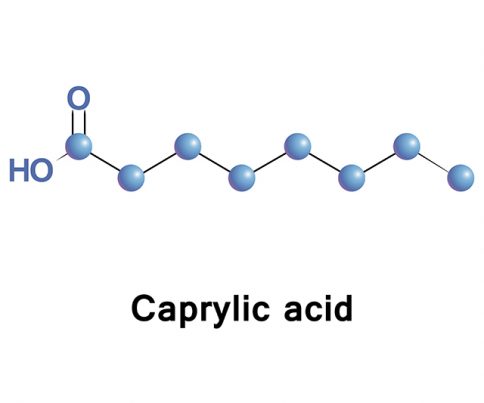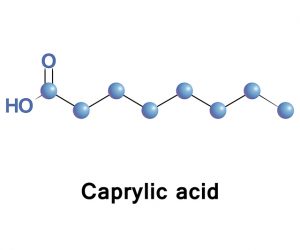
Caprylic acid sources, health benefits and uses
Wednesday, September 20, 2017 by Frances Bloomfield
http://www.naturalpedia.com/caprylic-acid-sources-health-benefits-and-uses.html

Caprylic acid, also known as octanoic acid, is an eight-carbon saturated fatty acid naturally present in the milk of various animals. Edible oils such as palm and coconut oil are known to contain caprylic acid as well. Caprylic acid has garnered much attention in recent years after its numerous medicinal properties were discovered — specifically, its anti-inflammatory, antibacterial, antifungal, and antiviral properties. These beneficial qualities have made caprylic acid popular as a remedy for a wide array of health conditions, including but not limited to yeast infections and digestive disorders.
While present in milk and palm oil, coconut oil remains one of the more popular and common ways to obtain caprylic acid. Coconut oil is either incorporated into one’s diet or, if caprylic acid is being used to treat a skin condition, applied to the affected area. However, coconut oil is high in fat and should be consumed with caution. Vitamin shops and health food stores carry caprylic acid supplements, though as with many supplements, these can cause stomach upsets.

Medicinal uses for caprylic acid
Caprylic acid is being looked into as a treatment for Crohn’s disease, a chronic inflammatory bowel disease that can affect any part of the gastrointestinal tract and cause inflammation. If left unchecked, Crohn’s disease can lead to severe diarrhea, abdominal pains, and malnutrition. Caprylic acid has been observed as suppressing the secretion of the inflammatory chemokine interleukin 8 (IL-8), which is a major proponent of Crohn’s disease and other inflammatory bowel diseases.
Caprylic acid can be useful against irritable bowel syndrome too. In addition to soothing inflammation, the antibacterial property of caprylic acid can prevent possible bacterial infections in the digestive system from becoming this health ailment.
The antifungal property of caprylic acid has been noted as being quite effective against candida yeast infections, which result from fungal infections. It’s believed that the efficacy of caprylic acid is due to its ability to break down candida cell membranes. As such, caprylic acid can also be used to treat oral thrush, which is another type of fungal infection that is caused by candida overgrowth.
Internal and external yeast infections such as jock itch, vaginitis, and ringworm can all be treated and prevented with caprylic acid.
Skin conditions such as dermatophilosis, eczema, psoriasis, and acne can be remedied with caprylic acid thanks to its potent antibacterial and antimicrobial effects. If caprylic acid is derived from coconut oil, then the coconut oil can provide further relief by soothing the skin.
Caprylic acid has been shown to decrease the levels of bad or low-density lipoprotein (LDL) cholesterol without affecting good or high-density lipoprotein (HDL) levels.
Body systems supported by caprylic acid
In addition to protecting the digestive system from inflammatory diseases, caprylic acid can improve the overall health of the gut. Caprylic acid can enhance the digestive process by increasing stomach flow, which in turn increases calcium intake and reduces cholesterol in the blood and liver. Furthermore, caprylic acid is completely natural and thus has no effect on the good bacteria on the gut while simultaneously decreasing the growth of bad bacteria. Good gut bacteria has in itself been linked to improved brain function and hormonal health.
Caprylic acid can support the health of the skin and heart too. Along with the other fatty acids found in coconut oil, caprylic acid can protect heart cells and the mitochondria, and increase blood circulation, leading to a truly healthy heart.
Where to learn more
- Good Foods You Can Eat to Fight Candida
- Should we go crazy for coconut oil? 10 Invisible Facts Of Coconut Oil!
- The Best Detox Drink of All Time With Beetroot and Avocado
Summary
Caprylic acid is a health-promoting fatty acid that is good for the digestive system, skin, and heart. It can prevent, treat, and relieve the symptoms of candida, yeast infections, numerous skin conditions, and high cholesterol. Caprylic acid is present in milk, palm oil, and coconut oil, with coconut oil standing as the best source.
Sources include:
PubChem.NCBI.NLM.NIH.gov
VeryWell.com
SelfHacked.com
HealthLine.com
Tagged Under: Tags: Caprylic acid





